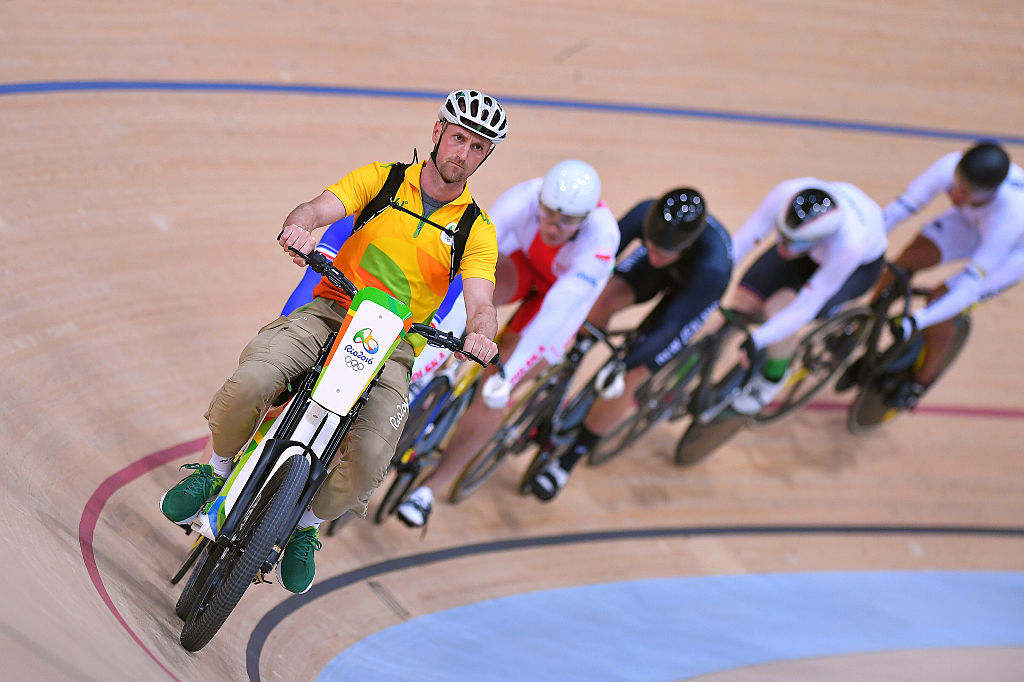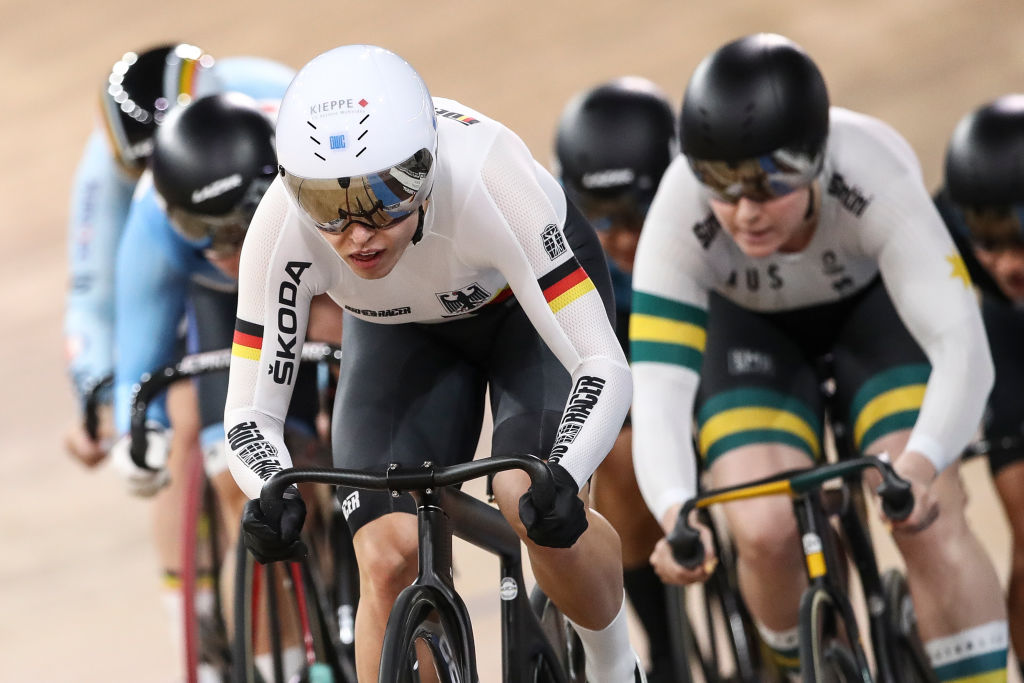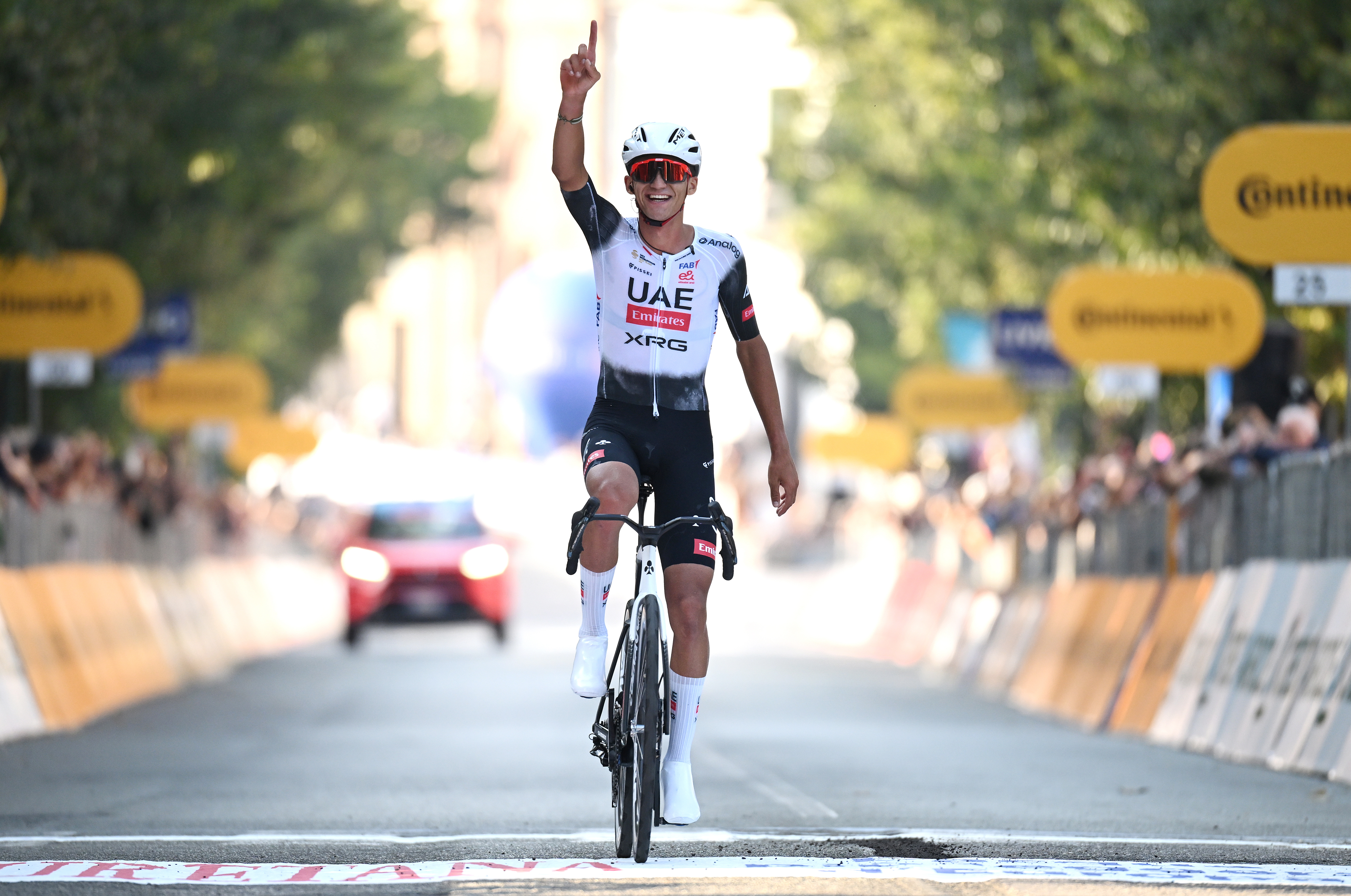Track cycling: What is the Keirin?
The last remaining motor-paced event in track cycling

The Olympic Keirin pits the world's best sprinters against each other in this fast, exciting and often dangerous event.
The Keirin starts with riders being held by helpers and taking off from a standstill. However, the Keirin uses a pacer on an electric motorbike to bring the pack of six or fewer opponents up to speed. Before the start, riders draw lots to see where they will be positioned behind the pacer and, after take-off, they must settle into that order as the race begins.
The riders sit in a line behind the pacer for three laps, being brought gradually up to 50kph. They must remain behind the pacer until it leaves the track, then all bets are off and riders use a combination of strategy, positioning and strength to be the first across the finish line after another three laps.
In Japan, the sport is hugely popular for betting purposes and events are attended by millions of fans and bets tally into the billions of yen. Japanese Keirin riders attend specific schools for training before racing as professionals.
History

The Keirin made its debut in the Olympics in Sydney in 2000, 20 years after being added to the UCI Track World Championships as an event. Florian Rousseau (France) was the first gold medalist, while the British have won the last four gold medals – with Chris Hoy in Beijing and London and Jason Kenny in Rio and Tokyo.
The women's event was added in 2012, with Victoria Pendleton claiming the gold in London and Dutch rider Elis Ligtlee staging an upset win over Becky James and Anna Meares in Rio. The Netherlands triumphed again in Tokyo, this time thanks to Shanne Braspennincx.
The beauty of the Keirin lies in its randomness – anything can happen across the three rounds and the 'repechages' that precede the gold medal final.
The latest race content, interviews, features, reviews and expert buying guides, direct to your inbox!
The competition starts with 30 riders at the Olympics, spread across five heats of six riders each in the opening round. The first two finishers of each heat automatically qualify to move onto the second round (10 riders) while the rest enter the repechage heats, four heats of five riders each. Again, the top two get to move onto Round 2 for a total of 18 continuing and a dozen athletes being knocked out entirely.
Round 2 is safer, with the top four riders in each of three heats moving on to Round 3 and six riders eliminated. Round 3 determines which riders get to race for the medals and which will be racing for seventh through 12th place overall.
The top three riders from the two heats of Round 3 move onto the medal round, where the top three claim gold, silver and bronze.

Laura Weislo has been with Cyclingnews since 2006 after making a switch from a career in science. As Managing Editor, she coordinates coverage for North American events and global news. As former elite-level road racer who dabbled in cyclo-cross and track, Laura has a passion for all three disciplines. When not working she likes to go camping and explore lesser traveled roads, paths and gravel tracks. Laura specialises in covering doping, anti-doping, UCI governance and performing data analysis.
